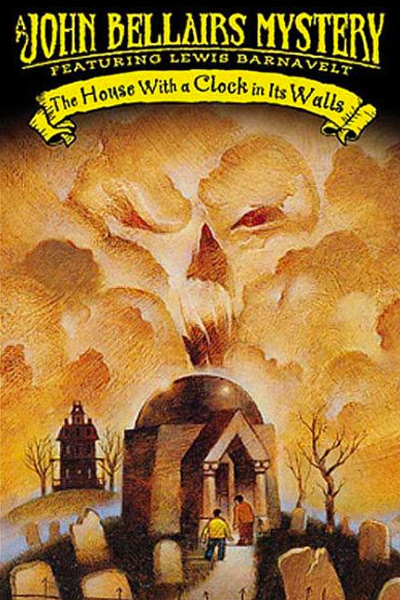Revisiting the Gothic Children’s Books of John Bellairs

What happens to a diehard fan of children’s fantasy when the whole Harry Potter series has been re-read twice? When the Lemony Snickets are gone and all four volumes of the The Mysterious Benedict Society have been consumed like a bag of Halloween candy by a hungry child mob? I was willing to try anything if it meant getting my fix, even going back in time to the 1980s, to revisit the work of an author I once loved but could now only vaguely remember: John Bellairs.
Bellairs’ gothic mysteries were best-sellers in that misty time before the Internet and microwavable saag paneer, and, as with all impulses born of nostalgia, I was afraid to find they hadn’t aged well. But The House with the Clock in its Walls (the first in a long series of Lewis Barnavelt mysteries) holds up remarkably well—save for the stray reference to mysterious antique toys such as the “view-master,” readers would never guess it was first published back in 1973. And if you’re a reader in search of a macabre story still ripe with humor, there is perhaps no greater reassurance than the sight of Edward Gorey’s crosshatched illustrations. Gorey, as it turns out, illustrated a great many of the Barnavelt mysteries, as well as several of Bellairs’ other series featuring boy sleuths.
The hero of The House with a Clock in its Walls is, as per convention, a recently orphaned boy consigned to a mysterious uncle in a distant town that happens to be in Michigan but may as well be Transylvania. Yes, there is an endearingly grumpy witch. Yes, there is a magical struggle to save the world from oblivion that ends with everyone dying in a ball of fire (just kidding). None of this is surprising in the world of children’s fiction. What is surprising is the quality of Bellairs’ writing, which is shot through with the kind of real emotion that animates all great children’s books. At the heart of this tale is a search for friendship. When Lewis Barnavelt—pudgy, awkward, hopeless at sports—manages to attract the interest of Tarby, a popular jock temporarily sidelined by a broken arm, he will do anything to maintain the friendship. There’s an insatiable clock ticking away within the walls of his uncle’s ramshackle mansion, but the clock is also ticking down on Lewis and Tarby’s friendship, as Tarby’s arm heals and he is drawn back into his role as star pitcher. The intrepid Lewis will do anything to hold onto Tarby, even if it means raising the dead.
Everyone who had a childhood can relate to Lewis’ desperation, his hope for friendship, and his desire to reach that magical social plateau free of casual humiliation. The magical aspects of Bellairs’ world are both beautifully wrought and suffused in sadness, but it’s the other story, that of a boy in search of a friend, that will keep you turning the pages. And luckily for us, there are a great many pages to turn. Bellairs published fifteen YA novels during his lifetime, and author Brad Stickland carried on the torch of many of Bellairs’ series after his death.
Have you ever revisited a book discovered in childhood?